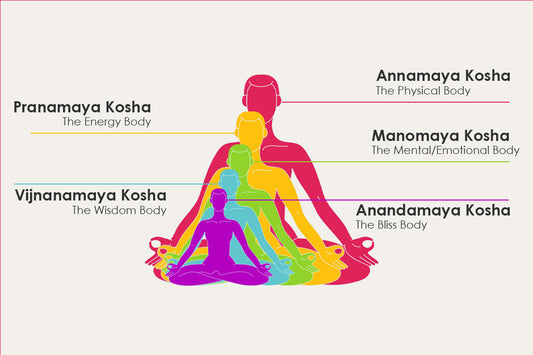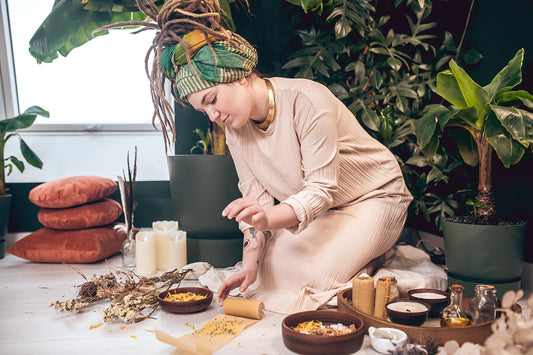If you’ve ever joined a yoga class or followed a morning yoga video, chances are you’ve heard of Sun Salutations. Known as Surya Namaskar in Sanskrit, this sequence of poses is a graceful flow that connects breath with movement. It’s a popular part of yoga routines because it helps you ease into physical activity while bringing focus to your breath and body.
There are different versions of Sun Salutation, with A, B, and C being the most well-known. Each one offers something unique while keeping the foundation rooted in classic yoga postures. Whether you're just starting your yoga journey or looking to add variety to your routine, this guide will walk you through the sequences step by step in a simple and clear way.
What Is a Sun Salutation?
Sun Salutations are a series of yoga poses linked together in a flowing movement. Traditionally, they are practiced facing the sun as a way to greet the new day and awaken your body and mind.
Each version — A, B, and C — starts and ends in the same standing position (Tadasana or Mountain Pose) but includes different poses in between. The goal is to move with your breath: inhaling as you stretch upward or open your chest, and exhaling as you fold forward or step back.
Key Poses You’ll See in All Sequences
Before we go into the full flows, here are a few important poses that appear throughout the sequences:
- Adho Mukha Svanasana (Downward-Facing Dog): This pose looks like an upside-down "V". It helps stretch your back, arms, and legs while giving your whole body a moment to reset.
- Urdhva Mukha Svanasana (Upward-Facing Dog): This is often paired with a backbend. Your chest opens while your legs and hips lift off the ground. It helps maintain flexibility in your spine and shoulders.
- Chaturanga Dandasana: Often called a yoga push-up, this is a low plank position that helps build strength and stability.
Sun Salutation A (Surya Namaskar A)

Sun Salutation A is the most basic version and is usually the starting point for beginners. Here’s the flow:
- Tadasana (Mountain Pose): Start standing tall with feet together and hands by your sides.
- Urdhva Hastasana (Upward Salute): Inhale, reach both arms up.
- Uttanasana (Standing Forward Fold): Exhale, fold forward from the hips.
- Ardha Uttanasana (Halfway Lift): Inhale, lift your spine halfway with hands on your shins.
- Chaturanga Dandasana: Exhale, step or jump back and lower halfway down.
- Urdhva Mukha Svanasana (Upward-Facing Dog): Inhale, lift your chest and legs off the ground.
- Adho Mukha Svanasana (Downward-Facing Dog): Exhale, lift your hips into an upside-down V.
- Step forward to Ardha Uttanasana: Inhale, lift halfway.
- Uttanasana: Exhale, fold forward.
- Urdhva Hastasana: Inhale, rise up with arms overhead.
- Tadasana: Exhale, return to standing.
Repeat 3–5 times, linking your breath to each move.
Sun Salutation B (Surya Namaskar B)

This version adds more heat and energy. It introduces extra poses like Chair Pose and Warrior I.
- Tadasana
- Utkatasana (Chair Pose): Inhale, bend your knees and raise arms.
- Uttanasana: Exhale, fold forward.
- Ardha Uttanasana: Inhale, lift halfway.
- Chaturanga Dandasana: Exhale, step/jump back and lower.
- Urdhva Mukha Svanasana: Inhale, lift chest.
- Adho Mukha Svanasana: Exhale, lift hips.
- Virabhadrasana I (Warrior I – Right leg): Inhale, step right foot forward, rise with arms up.
- Chaturanga Dandasana: Exhale, lower down.
- Urdhva Mukha Svanasana: Inhale.
- Adho Mukha Svanasana: Exhale.
- Virabhadrasana I (Left leg): Inhale, step left foot forward, rise.
- Chaturanga Dandasana: Exhale.
- Urdhva Mukha Svanasana: Inhale.
- Adho Mukha Svanasana: Exhale, hold for a few breaths.
- Step or jump forward: Inhale halfway lift, exhale fold.
- Utkatasana: Inhale, bend knees and lift arms.
- Tadasana: Exhale, stand tall.
Sun Salutation B is more intense and usually practiced after a few rounds of A.
Sun Salutation C (Surya Namaskar C)

This variation is less commonly practiced in modern yoga classes, but it’s still valuable. It includes more gentle postures, which can be helpful for beginners or anyone looking to move more slowly.
- Tadasana
- Urdhva Hastasana
- Uttanasana
- Ashwa Sanchalanasana (Low Lunge – Right leg): Inhale, step right leg back and look forward.
- Plank Pose: Exhale, step back with the other leg.
- Chaturanga Dandasana
- Bhujangasana (Cobra Pose): Inhale, lift chest with elbows bent and legs on the ground.
- Adho Mukha Svanasana: Exhale, lift hips up.
- Ashwa Sanchalanasana (Left leg forward): Inhale, step left foot up.
- Uttanasana: Exhale, step forward and fold.
- Urdhva Hastasana: Inhale, rise up.
- Tadasana: Exhale.
Sun Salutation C replaces some of the deeper strength moves (like Upward-Facing Dog) with gentler ones (like Cobra), making it a great starting point for beginners or for days when your body needs a slower rhythm.
Tips for Practicing Sun Salutations
- Breathe naturally: Always match movement with breath. Inhale when opening or stretching upward, exhale when folding or stepping back.
- Go at your own pace: It’s okay to move slowly and pause when needed.
- Use props if needed: Blocks or folded blankets can help you stay comfortable.
- Stay aware of your body: If any pose feels off, adjust your stance or skip it altogether.
Conclusion
Sun Salutation sequences A, B, and C offer simple, flowing ways to connect your body and breath. They can help support flexibility, strength, and balance in your daily routine. Whether you’re doing just one round to start your day or flowing through several rounds in a full yoga session, these sequences are a solid foundation for any yoga practice.
Remember, the key is not perfection but presence. So roll out your mat, breathe deeply, and enjoy the flow — one sun salutation at a time.






